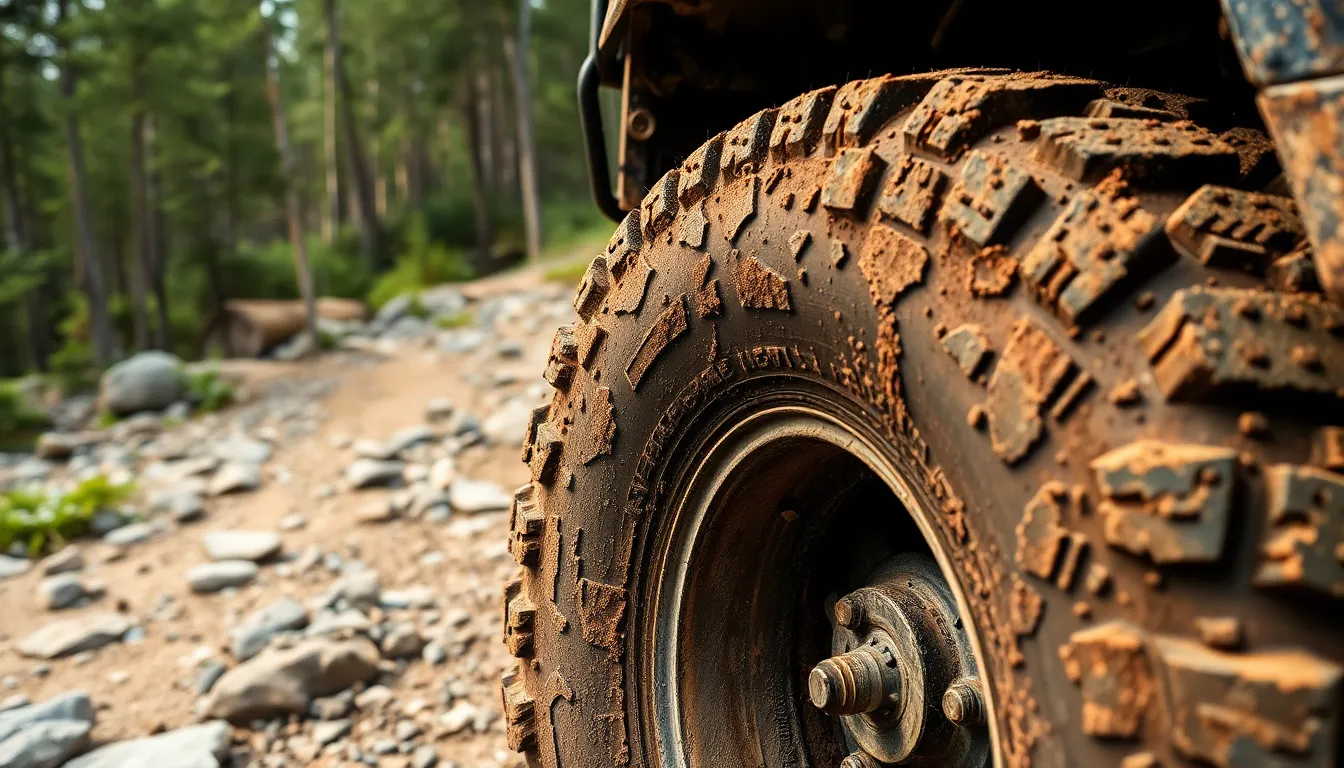When we’re investing in all-terrain tires, one of the most pressing questions we face is how long they’ll actually last. These versatile tires promise to handle everything from highway cruising to off-road adventures, but their durability often remains a mystery until we’re forced to replace them.
The lifespan of all-terrain tires isn’t just about getting our money’s worth – it’s about safety, performance, and planning for future expenses. We’ve all heard conflicting information about tire longevity, leaving us wondering whether we’re getting 30,000 miles or 80,000 miles from our investment.
Understanding the factors that determine all-terrain tire lifespan can save us hundreds of dollars and prevent unexpected roadside emergencies. From driving habits and road conditions to tire maintenance and brand quality, we’ll explore exactly what influences how long these tires last and help you maximize their performance on every terrain.
What Are All Terrain Tires and How They Differ
All terrain tires represent a versatile tire category designed to perform across multiple driving surfaces and conditions. These tires combine elements from highway tires and mud terrain tires to create a balanced solution for drivers who encounter varied road conditions.
Tread Pattern Design
All terrain tires feature deeper tread blocks compared to highway tires, typically measuring 12/32 to 18/32 inches when new. The tread patterns include:
- Aggressive shoulder lugs for enhanced traction
- Wider grooves for mud and debris evacuation
- Siping technology for wet weather grip
- Reinforced sidewalls for puncture resistance
Key Differences from Other Tire Types
| Tire Type | Tread Depth | Road Noise | Fuel Economy | Off-Road Capability |
|---|---|---|---|---|
| Highway | 8/32 – 10/32 inches | Low | Excellent | Poor |
| All Terrain | 12/32 – 18/32 inches | Moderate | Good | Very Good |
| Mud Terrain | 18/32 – 24/32 inches | High | Fair | Excellent |
Construction Materials and Technology
Modern all terrain tires incorporate advanced rubber compounds that resist cuts and chips from rocks and debris. Manufacturers use steel belts and polyester cord plies to enhance durability while maintaining ride comfort on paved roads.
Performance Characteristics
All terrain tires excel in multiple environments including gravel roads, light mud, sand, and wet pavement. They maintain highway driving comfort while providing the traction needed for camping trips, construction sites, and outdoor recreation activities.
Load Rating and Size Options
These tires come in various load ratings from SL (Standard Load) to E (10-ply rating) to accommodate different vehicle weights and towing requirements. Popular sizes range from 15-inch to 22-inch wheel diameters for trucks, SUVs, and crossover vehicles.
Average Lifespan of All Terrain Tires

All terrain tires deliver an average lifespan between 30,000 and 50,000 miles under normal driving conditions. Industry manufacturers consistently report that most all terrain models reach approximately 40,000 miles before requiring replacement.
Typical Mileage Expectations
Most drivers can expect their all terrain tires to last 40,000 miles with proper maintenance and moderate driving habits. Premium models occasionally extend beyond this range, reaching 50,000 to 80,000 miles when optimal conditions align.
Several factors directly impact the actual mileage we achieve:
- Tread design complexity – Aggressive tread patterns and softer rubber compounds accelerate wear rates
- Personal driving techniques – Gentle acceleration, smooth braking, and controlled cornering preserve tread life
- Operating environments – Highway driving creates less stress than urban stop-and-go traffic or off road adventures
- Maintenance consistency – Regular tire rotation, wheel balancing, and pressure checks promote even wear distribution
- Road surface conditions – Abrasive pavement and rough terrain increase tire degradation
Comparison to Other Tire Types
| Tire Type | Average Lifespan | Performance Focus |
|---|---|---|
| Highway Tires | 60,000 miles | Maximum durability and fuel economy |
| All Terrain Tires | 30,000-50,000 miles | Balanced on-road and off-road capability |
| Mud Terrain Tires | 20,000-40,000 miles | Aggressive off-road traction |
Highway tires consistently outlast all terrain options by approximately 20,000 miles due to their specialized rubber compounds and optimized tread designs for pavement use. All terrain tires sacrifice some longevity to maintain versatility across multiple driving surfaces.
Mud terrain and hybrid terrain alternatives wear significantly faster than all terrain models because their aggressive tread blocks and softer compounds prioritize extreme traction over durability. We observe that all terrain tires provide the optimal balance between lifespan and multi surface performance for most drivers.
Key Factors That Affect All Terrain Tire Longevity

Several critical elements determine how many miles you can expect from your all terrain tires. Understanding these factors helps us maximize tire performance and get the best value from our investment.
Driving Conditions and Terrain
Terrain type dramatically impacts all terrain tire lifespan more than any other single factor. Highway and street driving extends tire life significantly, allowing AT tires to reach 50,000 to 60,000 miles in many cases. Off road adventures on rough or abrasive surfaces accelerate wear patterns, reducing lifespan to approximately 30,000 to 40,000 miles.
Harsh road conditions create additional challenges for tire longevity. Roughly paved roads and steep grades wear tires faster due to increased friction and heat generation. Gravel roads and rocky terrain cause more aggressive tread wear compared to smooth asphalt surfaces.
Mixed driving conditions produce varying results based on the percentage of each terrain type. Drivers who spend 80% of their time on highways can expect closer to the upper mileage range, while those frequently tackling challenging off road trails see accelerated wear patterns.
Vehicle Weight and Load Capacity
Heavier vehicles place substantially more stress on tire construction and tread compounds. Large trucks and SUVs naturally wear tires faster than lighter passenger vehicles due to increased contact pressure and rolling resistance. Vehicle weight directly correlates with tire wear rates across all terrain types.
Load capacity ratings become critical when hauling cargo or towing trailers. Exceeding manufacturer recommended load limits accelerates tire degradation and reduces overall lifespan. Proper load distribution helps maintain even wear patterns and extends tire life.
Ensuring tires match your vehicle’s exact weight requirements prevents premature failure. Undersized tires for heavy vehicles experience excessive stress, while properly rated tires handle loads more effectively and last longer.
Tire Maintenance Practices
Regular rotation prevents uneven wear patterns that significantly reduce tire lifespan. Most tire manufacturers recommend rotation every 5,000 to 8,000 miles to ensure balanced tread wear across all four tires. Proper rotation patterns depend on your vehicle’s drive configuration and tire directional design.
Maintaining correct tire pressure optimizes contact patch distribution and prevents excessive heat buildup. Under inflated tires wear faster on the outer edges, while over inflated tires experience center tread wear. Checking pressure monthly helps maintain optimal performance.
Wheel alignment and balancing directly affect tire longevity by ensuring even contact with road surfaces. Misaligned wheels cause irregular wear patterns that can reduce tire life by 25% or more. Professional alignment checks every 10,000 miles prevent costly premature replacements.
Monitoring for damage signs helps catch problems before they become serious. Cracks, bulges, and uneven tread wear indicate potential issues that require immediate attention. Early detection prevents complete tire failure and extends overall tire life.
Signs Your All Terrain Tires Need Replacement
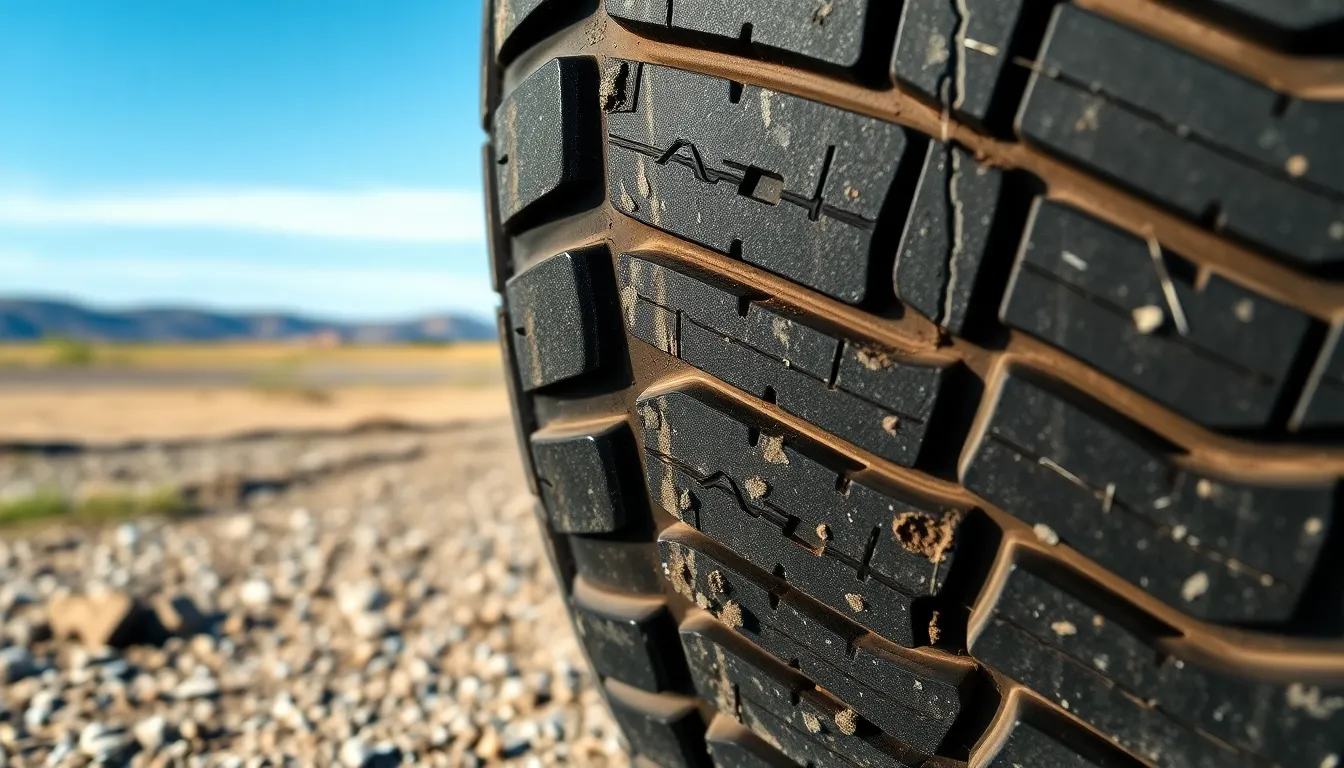
Recognizing when all-terrain tires require replacement protects your safety and maintains optimal vehicle performance. Several key indicators signal the time for new tires before complete failure occurs.
Tread Depth Indicators
Tread depth serves as the primary measurement for tire replacement timing. All-terrain tires reach replacement point when tread depth measures 2/32 of an inch or less. Most tires include built-in tread wear indicators that appear as small rubber bars running across the tire grooves.
Professional tire depth gauges provide precise measurements for accurate assessment. Drivers can also use the penny test by inserting a penny head-first into the tire groove. The tire needs replacement if Lincoln’s entire head remains visible above the tread.
Visual Wear Patterns
Uneven tread wear patterns reveal underlying vehicle alignment issues and tire deterioration. Center wear indicates overinflation while edge wear suggests underinflation problems. Cupping or scalloping creates a wavy wear pattern that produces increased road noise during driving.
Sidewall cracking appears as small fissures that develop from age and environmental exposure. Bulging sidewalls indicate internal structural damage that creates dangerous blowout risks. These visual signs require immediate tire replacement regardless of remaining tread depth.
Increased road noise or reduced traction during acceleration and braking also signal tire wear progression. Regular visual inspections every month help identify these warning signs before they compromise vehicle safety.
How to Maximize All Terrain Tire Life
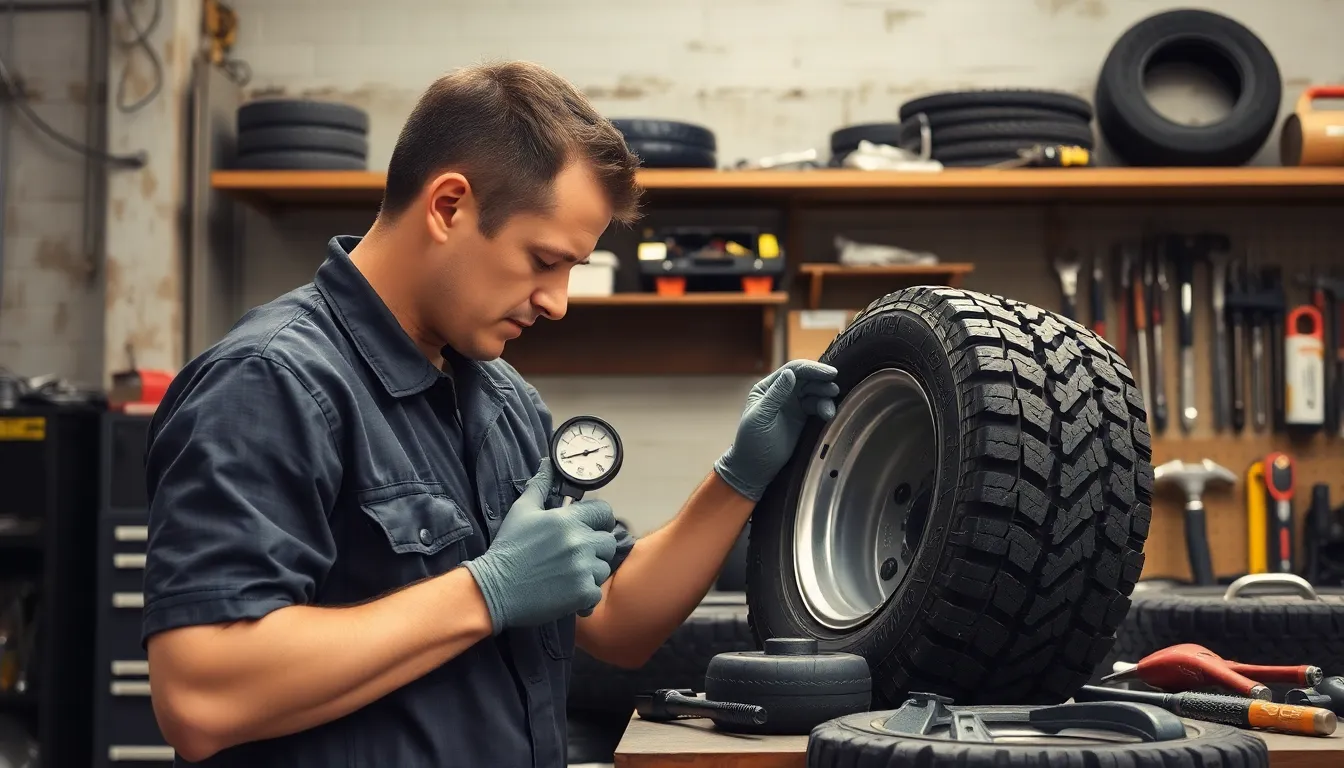
Extending the lifespan of your all-terrain tires requires consistent maintenance practices and attention to exact care techniques. Following proven strategies can help you achieve the full potential of 50,000 to 60,000 miles from quality all-terrain tires.
Proper Inflation and Rotation
Maintaining correct tire pressure ensures even tread wear across your tire’s surface and improves overall safety performance. Check your tire pressure monthly using a reliable gauge, as underinflated tires wear faster on the outer edges while overinflated tires develop center wear patterns.
Rotating your tires every 5,000 to 8,000 miles prevents uneven wear patterns that reduce overall tire life. Front tires typically wear faster due to steering and braking forces, making regular rotation essential for maximizing your investment. Most all-terrain tires benefit from a front-to-rear rotation pattern, though checking your manufacturer’s recommendations ensures optimal results.
Temperature changes affect tire pressure significantly, with each 10-degree temperature drop reducing pressure by approximately 1 PSI. Monitor pressure more frequently during seasonal transitions to maintain consistent performance and wear characteristics.
Alignment and Balancing
Proper wheel alignment prevents premature tire wear and reduces strain on your suspension components. Misaligned wheels cause tires to scrub against the road surface, creating uneven wear patterns that can reduce tire life by 25,000 miles or more.
Regular wheel balancing eliminates vibrations that accelerate tread wear and stress tire components. Unbalanced wheels create bouncing motions that wear tread unevenly and can damage internal tire structures over time.
Schedule alignment checks annually or whenever you notice pulling, uneven wear patterns, or steering wheel vibrations. Professional technicians use computerized equipment to ensure precise adjustments that extend tire life and improve vehicle handling.
Storage and Seasonal Considerations
Store unused tires in cool, dry environments away from direct sunlight and ozone sources like electric motors or welding equipment. Rubber compounds degrade when exposed to UV rays and ozone, reducing tire life even during storage periods.
Keep stored tires off concrete floors using tire racks or wooden pallets to prevent moisture absorption and rubber degradation. Wrap tires in airtight plastic bags to minimize air exposure and maintain rubber compound integrity during extended storage.
Clean tires thoroughly before storage, removing dirt, brake dust, and road chemicals that can cause rubber deterioration. Apply tire protectant products designed for long term storage to maintain sidewall flexibility and prevent cracking.
Top All Terrain Tire Brands and Their Durability
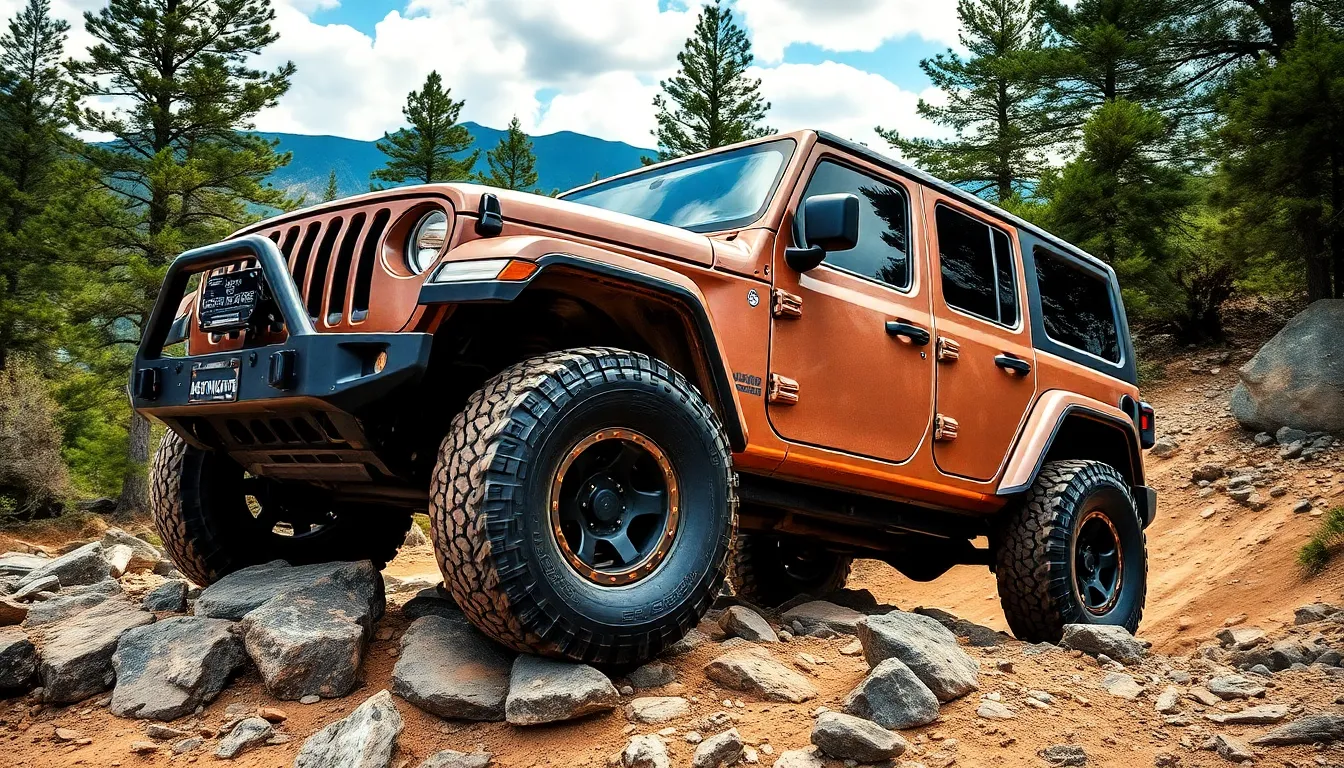
Understanding tire brand performance helps determine the best investment for your exact driving needs. Leading manufacturers have established track records for durability based on real-industry testing and consumer feedback.
Premium All Terrain Tire Brands
BF Goodrich stands out among all terrain tire manufacturers with consistent performance across different driving conditions. Their all terrain models typically deliver 50,000 to 60,000 miles when properly maintained according to manufacturer specifications. Construction quality and advanced rubber compounds contribute to this extended lifespan compared to budget alternatives.
Michelin produces all terrain tires known for balanced performance and longevity. Their models often reach the higher end of the 30,000 to 50,000 mile range due to specialized tread compounds and engineering. Premium pricing reflects the advanced materials and manufacturing processes used in their tire construction.
Goodyear Wrangler series offers reliable all terrain performance with durability spanning the typical 30,000 to 50,000 mile range. Their tire designs prioritize consistent wear patterns and resistance to sidewall damage during mixed terrain driving conditions.
Mid-Range Performance Options
Cooper Discoverer models provide solid all terrain capability with longevity expectations around 40,000 miles under normal usage. These tires balance performance characteristics with cost effectiveness for drivers seeking reliable all terrain functionality.
Falken Wildpeak tires deliver competitive durability within the standard 30,000 to 50,000 mile range. Their construction emphasizes puncture resistance and consistent tread wear across different surface types.
Factors Affecting Brand Performance
Tire quality directly impacts longevity with high-quality models sometimes exceeding 80,000 miles under optimal conditions. Premium brands invest in advanced rubber compounds and construction techniques that resist wear better than budget alternatives. Manufacturing standards and quality control processes vary significantly between brands affecting overall tire performance.
| Brand Category | Typical Mileage Range | Key Durability Features |
|---|---|---|
| Premium (BF Goodrich, Michelin) | 50,000-60,000+ miles | Advanced compounds, superior construction |
| Mid-Range (Cooper, Falken) | 30,000-50,000 miles | Balanced performance, cost effective |
| Budget Options | 20,000-40,000 miles | Basic construction, shorter lifespan |
Usage patterns and maintenance practices influence actual mileage regardless of brand selection. Highway driving extends tire life while aggressive off-road use reduces expected mileage across all manufacturers. Regular rotation and proper inflation maximize the durability potential of any all terrain tire brand you choose.
Cost vs. Longevity Analysis
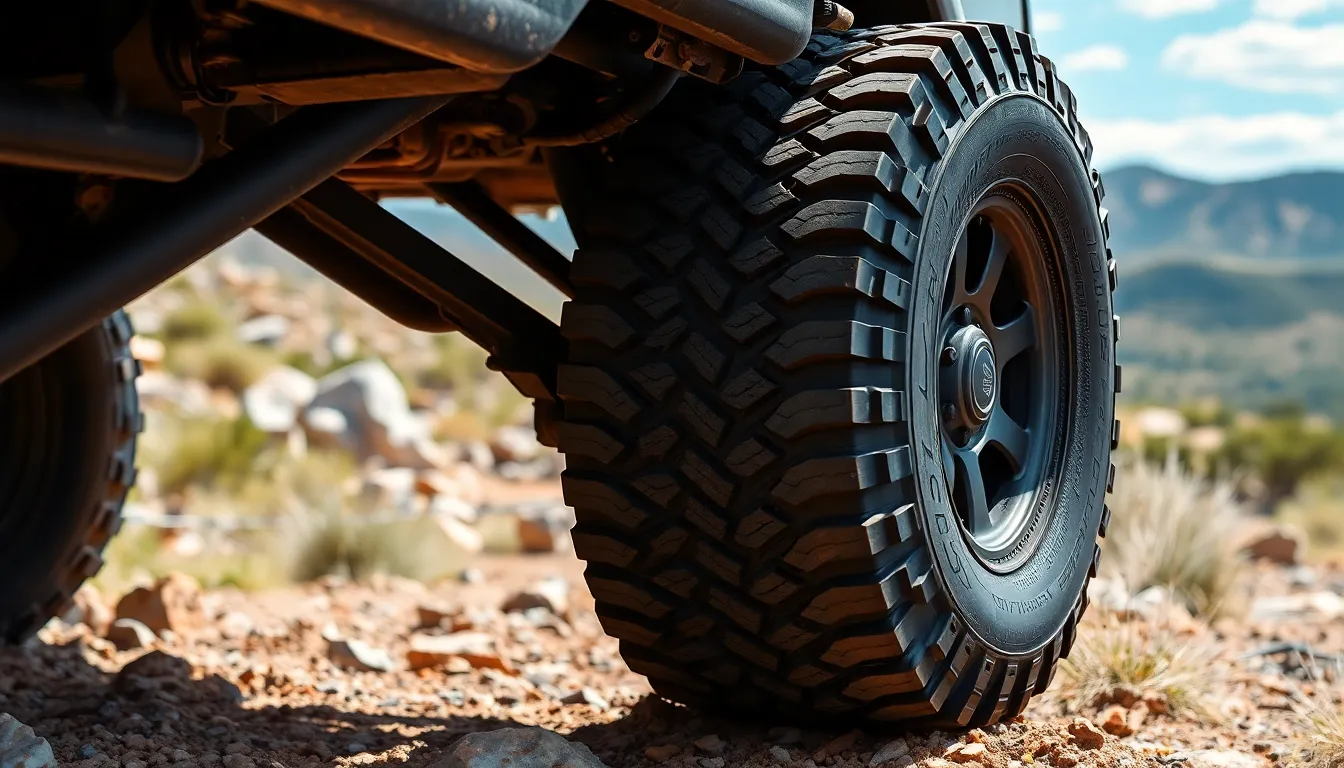
All-terrain tire expenses become more manageable when we examine their cost per mile performance across different categories. Standard range all-terrain tires deliver 30,000 to 50,000 miles of service, positioning them as more cost-effective alternatives to specialized mud-terrain options that typically last only 20,000 to 40,000 miles.
Premium all-terrain models justify their higher initial investment through extended service lives of 50,000 to 80,000+ miles. These top-tier options achieve cost-per-mile efficiency comparable to highway or all-season tires when drivers use them primarily on paved surfaces.
| Tire Type | Typical Lifespan (Miles) | Relative Cost | Cost-Per-Mile Efficiency |
|---|---|---|---|
| All-Terrain | 30,000–80,000+ | Moderate–High | Good–Excellent |
| Mud-Terrain | 20,000–40,000 | Moderate–High | Fair–Moderate |
| Highway/All-Season | 40,000–80,000+ | Low–Moderate | Excellent |
Maintenance practices and driving habits significantly impact the economic value of all-terrain tires. Proper rotation, balancing, and inflation combined with mostly highway or gentle off-road use maximize value and extend tire life. Aggressive off-road driving or harsh urban conditions shorten lifespan and increase long-term costs substantially.
Tire age considerations add another dimension to the cost analysis beyond mileage alone. Manufacturers recommend tire replacement every 6 to 10 years regardless of remaining tread depth due to rubber aging and degradation.
Budget-conscious drivers find all-terrain tires offer exceptional versatility without the premium price tag of specialized tires. The balanced lifespan-to-cost ratio makes them attractive for those needing adaptable performance across various driving conditions while maintaining reasonable replacement intervals.
Conclusion
All-terrain tires represent a smart investment for drivers seeking versatility without sacrificing durability. With proper care and maintenance we can expect these tires to deliver 40,000 to 50,000 miles of reliable service with premium options potentially reaching 80,000 miles.
The key to maximizing our tire investment lies in understanding the balance between performance and longevity. Regular maintenance practices like proper inflation tire rotation and alignment checks can significantly extend tire life while ensuring optimal safety and performance.
Whether we choose budget-friendly or premium options the most important factor remains consistent care. By monitoring tread depth maintaining proper pressure and adjusting our driving habits we’ll get the most value from our all-terrain tire investment while enjoying confident performance across various driving conditions.
Frequently Asked Questions
How long do all-terrain tires typically last?
All-terrain tires typically last between 30,000 to 50,000 miles under normal driving conditions, with most models reaching around 40,000 miles before replacement. Premium models can last up to 80,000 miles under optimal conditions. The actual lifespan depends on factors like driving habits, road conditions, maintenance practices, and tire quality.
What factors affect all-terrain tire longevity?
Several key factors influence tire lifespan: driving conditions (highway vs. off-road), vehicle weight and load capacity, maintenance practices, tread design complexity, and road surface conditions. Highway driving can extend life to 50,000-60,000 miles, while off-road conditions may reduce it to 30,000-40,000 miles.
When should I replace my all-terrain tires?
Replace all-terrain tires when tread depth reaches 2/32 of an inch or less. Other warning signs include uneven tread wear, sidewall cracking, bulging, increased road noise, and reduced traction during acceleration or braking. Regular visual inspections help identify these warning signs before they compromise safety.
How can I maximize my all-terrain tire lifespan?
Maintain proper tire pressure, rotate tires every 5,000-8,000 miles, ensure proper wheel alignment and balancing, and conduct regular visual inspections. Store unused tires in cool, dry environments away from concrete floors. These practices can help achieve the full potential lifespan of 50,000-60,000 miles.
Are premium all-terrain tire brands worth the extra cost?
Premium brands like BF Goodrich and Michelin typically deliver 50,000-60,000 miles and can exceed 80,000 miles under optimal conditions. While they cost more initially, they often provide better cost-per-mile efficiency through extended service life, especially when primarily used on paved surfaces with proper maintenance.
How do all-terrain tires compare to other tire types in longevity?
Highway tires generally last longer due to specialized designs for paved roads. Mud terrain tires wear faster due to aggressive tread patterns. All-terrain tires offer balanced performance between lifespan and versatility, making them suitable for drivers who need both on-road comfort and off-road capability.
Should tire age affect replacement decisions?
Yes, tire age is important regardless of tread depth. Experts recommend replacing tires every 6-10 years due to rubber degradation over time, even if tread appears adequate. Check the tire’s manufacturing date on the sidewall to determine age and plan for replacement accordingly.

